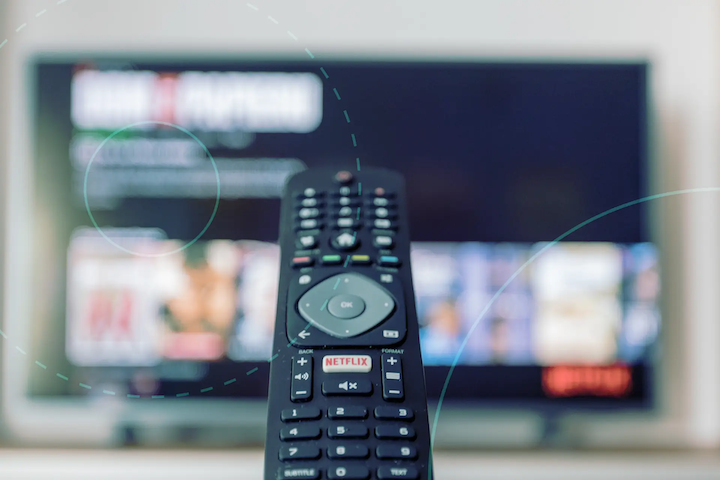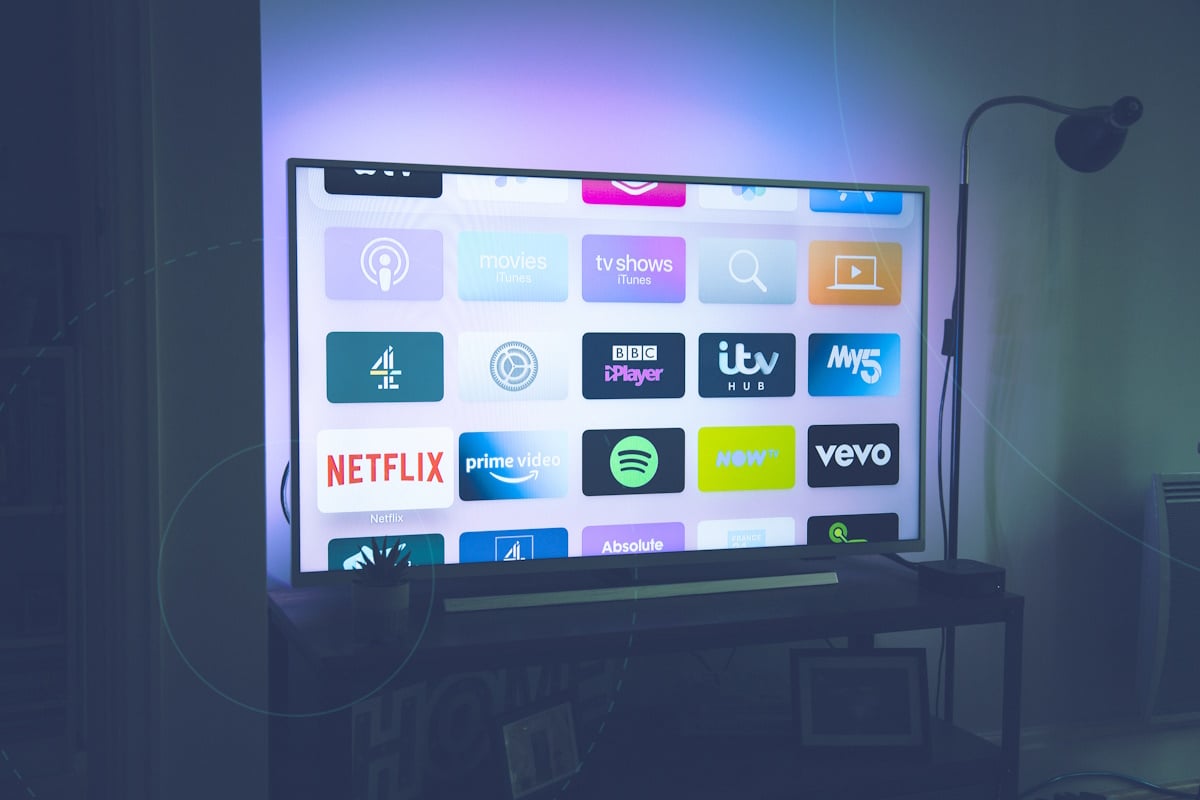Follow these 6 steps to maximize your retail ROI and drive holiday sales with measurable, outcome-based Performance TV campaigns.
Black Friday and Cyber Monday are right around the corner, and competition for consumer attention has never been fiercer. Last year, Cyber Monday alone drove $13.3 billion in online sales, making it the single biggest shopping day ever.
For retail marketers, that means it’s time to lock in your holiday advertising strategy now.
Traditionally, retailers have relied on digital channels like search, social, and email. But as consumer habits shift, Performance TV has emerged as the must-have channel for retailers who want both reach and measurable results.
In this blog, we’ll share strategies to supercharge your retail ROI with Performance TV advertising — from goal setting to creative to measurement. And if you want to go deeper, you can download our 2025 Performance TV Advertising Playbook for Retail Marketers.
Why Performance TV Belongs in Your Retail Media Mix
As the holiday season approaches, marketers are racing to capture attention in an increasingly crowded window. The good news is that the holidays are prime time for streaming media. Families are home, routines are looser, and Performance TV delivers big-screen, immersive, sound-on experiences — ideal for retail storytelling during peak shopping season.
More importantly, Performance TV combines the reach of television with the precision and measurability of digital. Unlike traditional TV, it allows you to:
- Run non-skippable, full-screen video ads across top streaming apps
- Target the right audiences with digital-level precision
- Optimize campaigns with AI in real time
- Tie ad exposure directly to measurable outcomes, like online purchases or in-store visits
- Turn attention into action via interactive formats like QR codes and shoppable overlays
The payoff is clear. Data shows that CTV generates 10x more conversions than linear TV at just 60% of the spend, and in the US, CTV delivers a 1:1 spend-to-conversion ratio, making it one of the most efficient media investments available.
For retailers entering peak shopping season, Performance TV is your solution to capturing attention at scale and proving that your ads drove sales.
6 Steps to Build a Retail Performance TV Strategy
Launching a successful Performance TV campaign doesn’t have to be overwhelming. Here are 6 key steps to guide your retail strategy this holiday season:
1. Set goals that go beyond impressions.
Impressions are important, but retail marketers need to think beyond reach to drive business outcomes. Before launching a campaign, define what success looks like. Having clear, outcome-based goals ensures every element of your campaign — from audience selection to bidding strategy — is aligned with real results, not vanity metrics.
Retailers typically set goals in a few categories:
- Brand awareness: Get your products and brand name in front of shoppers who may not know you yet.
- Engagement: Encourage interaction and spark interest, whether through memorable storytelling or promotional messaging.
- Conversions: Drive shoppers to take specific actions, like making an online purchase, visiting a store, or downloading your app.
- Return on ad spend (ROAS): Tie spend directly to outcomes like sales revenue, ensuring every dollar delivers measurable value.
Remember, your goals don’t have to be linear. Many successful retail campaigns run full-funnel strategies, building awareness while simultaneously retargeting high-intent shoppers.
2. Define your audience.
No two retailers have the exact same target audience, but identifying your ideal customer profile is non-negotiable. Ask yourself:
- How old are they, and where do they live?
- What are their interests and shopping habits?
- How do they prefer to discover and buy products?
Start broad and cast a wider net at the beginning to quickly learn who engages with your ads, what resonates, and who you can cut from targeting. This testing phase is critical to long-term campaign efficiency.
3. Balance prospecting and retargeting.
Winning retail campaigns don’t just fill the funnel — they close it.
- Prospecting campaigns introduce your brand to new shoppers who look like your best customers. This is perfect for seasonal promotions or new product lines.
- Retargeting campaigns keep your brand in front of people who visited your site, viewed products, or abandoned their carts. Performance TV lets you re-engage them on the biggest screen in the home and push them toward purchase.
By balancing the two, you can create demand and capture it during peak holiday shopping periods.
4. Set your budget.
TV advertising is often perceived as expensive, but Performance TV has changed the game. Costs can be comparable to search and social, and flexible models mean you don’t need a Super Bowl budget to compete.
Retail marketers with budgets of $25K-$30K per month can test more, learn faster, and optimize quickly, often within just four weeks. Smaller budgets work too, but you’ll need more time and patience to gather enough data for meaningful optimization.
But here’s where tvScientific’s Guaranteed Outcomes (GO) program changes the game. With GO, you don’t have to guess. Instead of buying impressions, you set a cost-per-outcome target, and the platform ensures your budget delivers predictable results. This makes Performance TV a reliable, measurable channel that integrates seamlessly into your retail media mix.
5. Design creative that converts.
You don’t need a blockbuster holiday commercial to win on Performance TV. But you do need creative that’s built for outcomes. For retail, that means:
- Short and sharp formats: 15–30 seconds is the sweet spot.
- Branding early and often: Feature your logo or product in the first few seconds so shoppers connect your message right away.
- Direct CTAs: “Shop the sale,” “Order today,” or “Find a store near you” give shoppers a clear next step.
- Seasonal urgency: Use limited-time offers, gift messaging, or holiday positioning to tap into Q4 buying behavior.
Think of creative as the bridge between awareness and conversion. Strong storytelling gets attention, but a strong CTA drives action.
6. Measure What Matters
One of the biggest advantages of Performance TV is radical transparency. Retail marketers can track everything from website visits to conversion rates to incremental lift — all tied back to your TV ads.
Key metrics for retail marketers include:
- Website visits driven by TV ads
- Conversions and ROAS (both online and in-store)
- Incremental lift (proving ads drove new sales, not just capturing demand that would’ve happened anyway)
- Cost per acquisition (CPA) or outcome-based pricing models
Even better, AI optimization ensures your campaigns are always learning, shifting budget toward the audiences, creatives, and placements that perform best. That means every campaign gets smarter, and every dollar works harder.
FAQ: Performance TV for Retail Marketers
How can performance marketers drive measurable outcomes with Connected TV campaigns? By leveraging outcome-based buying models, precise audience targeting, and AI optimization, marketers can directly connect ad exposure to metrics like purchases, ROAS, and in-store visits.
What KPIs should performance marketers track for CTV campaigns? Go beyond impressions. Key KPIs include ROAS, cost per acquisition (CPA), conversion rate, incremental lift, and website visits driven by CTV ads.
How do outcome-based billing models work in TV advertising? Instead of paying for impressions, advertisers only pay when their ads deliver a measurable result — like a completed purchase. This model ensures accountability and aligns spend with outcomes.
What are the advantages of non-skippable inventory in streaming TV? Unlike social or YouTube ads, non-skippable CTV ads ensure your brand message is seen in full. That’s critical during high-competition retail windows like Black Friday Cyber Monday.
How can small businesses run effective TV ads without large budgets? Performance TV levels the playing field. With flexible minimums and precise targeting, small businesses can run highly efficient campaigns without needing a national TV budget.
How can AI-driven optimization improve TV ad performance? AI continuously analyzes which audiences, inventory, and creatives deliver outcomes and automatically shifts spend to what works best. That means smarter campaigns with less manual work.
Get the Full Retail Playbook
What we’ve covered here is just the beginning. The full 2025 Performance TV Advertising Playbook for Retail Marketers includes budgeting insights from leading retail advertisers, a creative checklist built for holiday campaigns, technical requirements for CTV ads, and so much more.







